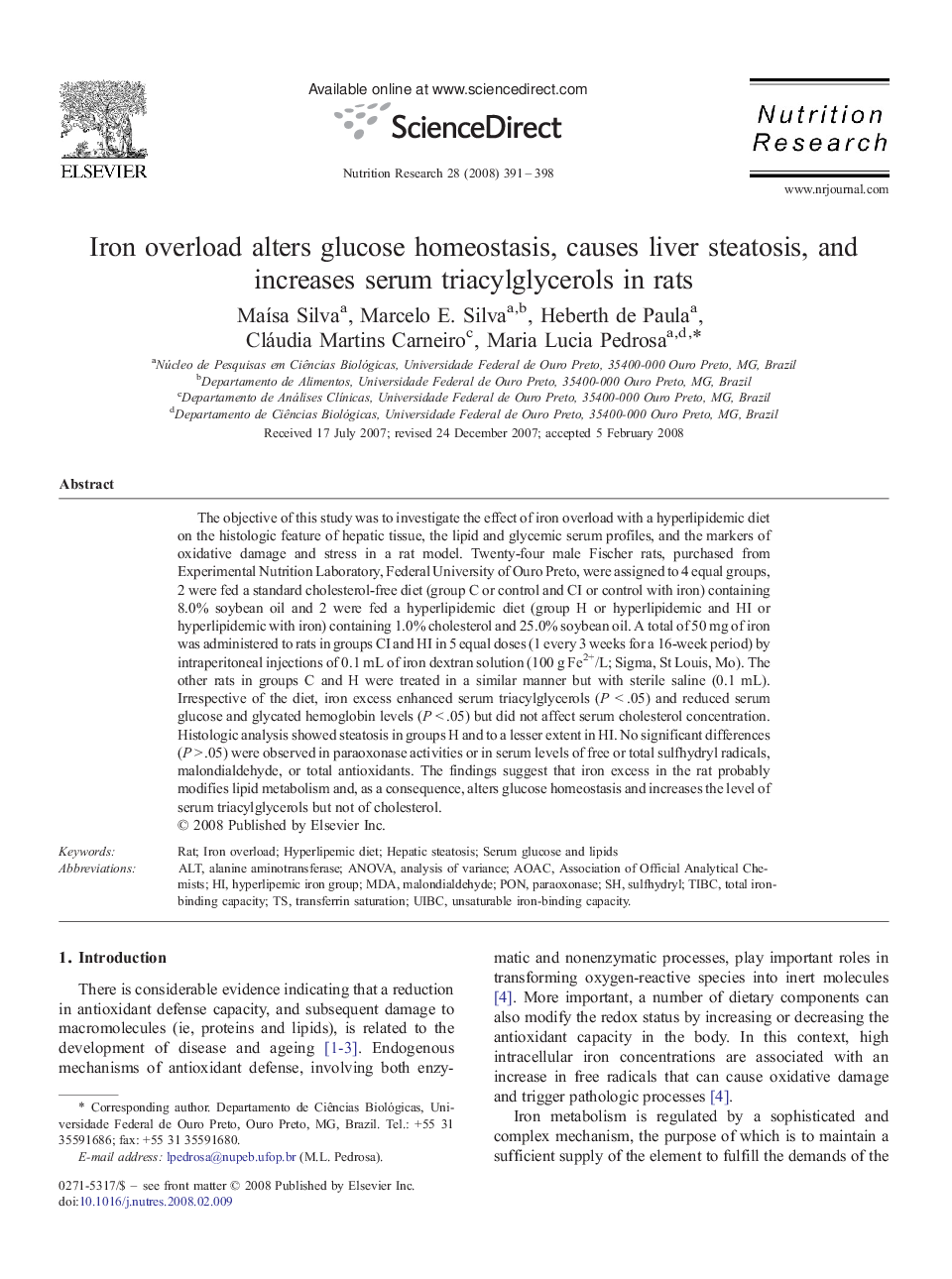| Article ID | Journal | Published Year | Pages | File Type |
|---|---|---|---|---|
| 2809494 | Nutrition Research | 2008 | 8 Pages |
The objective of this study was to investigate the effect of iron overload with a hyperlipidemic diet on the histologic feature of hepatic tissue, the lipid and glycemic serum profiles, and the markers of oxidative damage and stress in a rat model. Twenty-four male Fischer rats, purchased from Experimental Nutrition Laboratory, Federal University of Ouro Preto, were assigned to 4 equal groups, 2 were fed a standard cholesterol-free diet (group C or control and CI or control with iron) containing 8.0% soybean oil and 2 were fed a hyperlipidemic diet (group H or hyperlipidemic and HI or hyperlipidemic with iron) containing 1.0% cholesterol and 25.0% soybean oil. A total of 50 mg of iron was administered to rats in groups CI and HI in 5 equal doses (1 every 3 weeks for a 16-week period) by intraperitoneal injections of 0.1 mL of iron dextran solution (100 g Fe2+/L; Sigma, St Louis, Mo). The other rats in groups C and H were treated in a similar manner but with sterile saline (0.1 mL). Irrespective of the diet, iron excess enhanced serum triacylglycerols (P < .05) and reduced serum glucose and glycated hemoglobin levels (P < .05) but did not affect serum cholesterol concentration. Histologic analysis showed steatosis in groups H and to a lesser extent in HI. No significant differences (P > .05) were observed in paraoxonase activities or in serum levels of free or total sulfhydryl radicals, malondialdehyde, or total antioxidants. The findings suggest that iron excess in the rat probably modifies lipid metabolism and, as a consequence, alters glucose homeostasis and increases the level of serum triacylglycerols but not of cholesterol.
